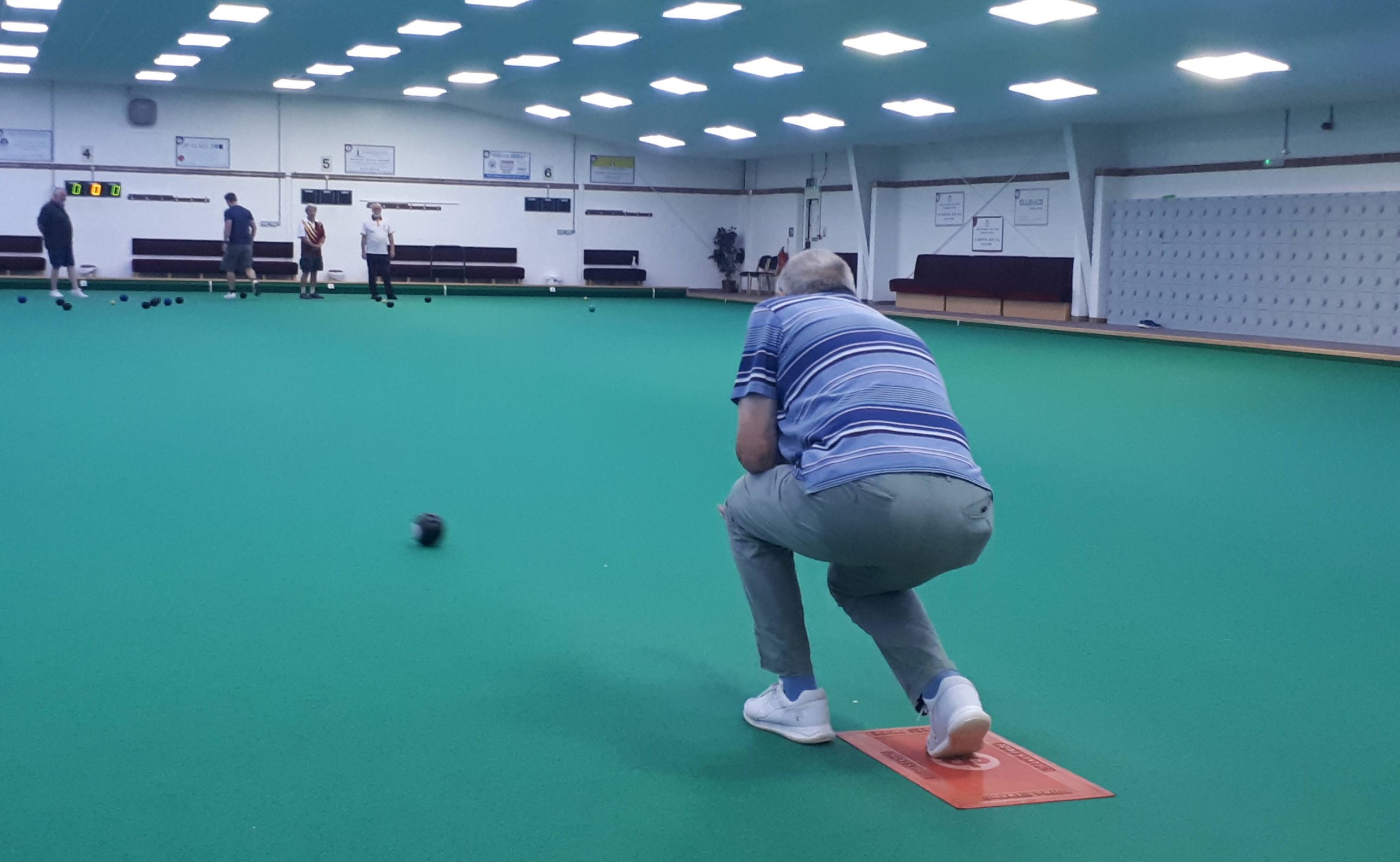Table of Contents
Some links on posts are affiliate links and will earn us a commission from qualifying purchases
In indoor bowls, the lead plays a pivotal role in shaping the outcome of each end. While their contributions might not always make headlines, their performance can set the stage for a team’s success. Let’s take an in-depth look at the responsibilities, skills, and strategies that make the lead position so crucial.
The Core Responsibilities of a Lead
1. Delivering the Jack
The lead’s first responsibility in each end is delivering the jack to the length requested by the skip. This seemingly simple task demands precision and an understanding of the team’s strategy.
- Length Matters: The length of the jack influences the type of shots needed throughout the end. For example, shorter lengths may favour touch play, while longer lengths could suit a more defensive strategy.
- Understanding Preferences: Different skips and teams have varying preferences. A good lead communicates effectively to ensure they meet these expectations.
- Handling Pressure: Delivering the jack under competitive conditions requires a calm and composed approach. Practicing this skill ensures confidence during matches.
2. Building the Head
The lead’s bowls are the first to establish the head, making their accuracy critical for the team’s success.
- Setting the Standard: The lead aims to place their bowls as close to the jack as possible, forcing the opposition to play under pressure.
- Strategic Positioning: While proximity to the jack is vital, there are times when a lead may be asked to place bowls in specific positions to block opponents or provide back position.
- Consistency is Key: A strong head built by the lead allows the skip and other players to focus on advanced tactics rather than playing catch-up.
3. Reading the Green
As the first player to bowl, the lead is often the first to notice changes in rink conditions, which can vary due to temperature, humidity, or match progression.
- Observational Skills: Pay attention to how the bowls behave on the rink—do they swing more on one side? Is the surface fast or slow? It’s often better to stick to one side of the rink, rather than one hand.
- Communicating Insights: Sharing your observations with the team can help everyone adjust their deliveries for better results. This makes the lead a vital source of real-time feedback.
- Adapting Quickly: Greens can change even during a single match. A good lead remains alert and adjusts their line and weight accordingly.
Key Skills for a Successful Lead
1. Accuracy and Consistency
Being a lead is about reliability. Your team counts on you to deliver accurate and consistent bowls that align with the overall game plan. This may sound boring to some, but a good consistent lead is worth their weight in gold to a rink.
- Practice Makes Perfect: Spend time honing your draw shot under different conditions to ensure precision.
- Focus on Repetition: Success as a lead often lies in the ability to replicate good shots, end after end.
- Develop Muscle Memory: Through regular practice, delivering consistent weight and line becomes second nature.
2. Focus and Discipline
The lead’s role requires them to concentrate on their specific responsibilities without being tempted to attempt more flamboyant shots.
- Stick to the Plan: The lead’s job is not to play aggressive shots but to create a solid foundation for the team.
- Handle Distractions: In competitive games, crowd noise or opposition tactics can test your focus. Competitions such as the Liberty Trophy can attract many rowdy supporters. Learn to block out external factors and remain disciplined.
- Stay Calm: Even if your bowls don’t go as planned, maintaining composure is essential to recover quickly. The more tense you become, the harder it is to maintain your form.
3. Team Spirit
The lead sets the tone for the team’s morale and dynamic. A positive attitude can inspire confidence throughout the rink.
- Support Your Teammates: Celebrate good shots and encourage others during tough moments. A strong team spirit can make a significant difference in tight matches.
- Lead by Example: Your energy and enthusiasm can influence how your teammates approach the game.
- Stay Engaged: Even when you’re not bowling, remain attentive and involved in the game to support your team.
4. Adaptability
The ability to adapt is a hallmark of an exceptional lead. Rink conditions and game situations can shift quickly, and the lead must respond accordingly.
- Adjust to the Rink: Be prepared to modify your line or weight based on how the green is playing.
- Flex with the Strategy: If the skip changes tactics mid-game, embrace the new approach without hesitation.
- Stay Resilient: In a challenging match, adaptability can mean the difference between seizing or losing control of the head.
Tips for Aspiring Leads
1. Practice Jack Delivery
Delivering the jack might seem like a routine task, but it has significant tactical implications.
- Master the Skill: Regularly practice rolling the jack to different lengths until you can do so with pinpoint accuracy.
- Develop a Routine: A consistent pre-shot routine can help you focus and deliver the jack effectively, even under pressure.
- Know the Rink: Familiarize yourself with the characteristics of various playing surfaces, as this knowledge can aid jack delivery. Some greens the jack may fly over the surface quicker than a heavier bowl which sits into the carpet – spot this quickly to avoid bowling short woods.
2. Hone Your Draw Shot
A good draw shot is the foundation of a lead’s effectiveness.
- Work on Line and Weight: Precision in both aspects is crucial for placing bowls near the jack.
- Simulate Match Conditions: Practice with scenarios that mimic real games to improve your confidence and adaptability.
- Analyze Outcomes: Evaluate your shots during practice to identify areas for improvement.
3. Understand Team Strategy
A lead who understands their team’s game plan can contribute more effectively.
- Communicate with the Skip: Regular discussions help align your efforts with the overall strategy. A lead/skip relationship is so important to the team.
- Learn Tactical Basics: While the skip makes most strategic calls, a good lead should understand common tactics to anticipate their role.
- Adapt to Different Skips: Each skip has their own style. Being flexible ensures you can support various leadership approaches.
4. Stay Calm Under Pressure
The lead’s role comes with its share of challenges, but keeping a cool head is essential.
- Practice Under Stress: Simulate pressure situations in training to prepare for competitive matches. Set up pretend heads where you need to draw round a short bowl, or if the bowl is a front toucher, trying to get just beyond the jack, but really close.
- Focus on the Process: Concentrate on your delivery technique rather than the outcome to stay composed.
- Embrace the Challenge: Viewing pressure as an opportunity rather than a threat can boost your confidence.
The Unsung Hero of the Rink
The lead’s contributions may not always be as visible as those of the skip, but their role is just as critical. By setting the foundation for each end, a skilled lead empowers the team to execute advanced tactics and gain a strategic edge.
With practice, focus, and a commitment to teamwork, any player can master the art of being a lead. Remember, in indoor bowls, every great shot starts with a strong foundation – and that foundation begins with the lead.


